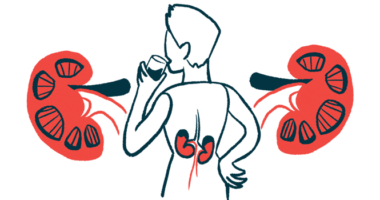aHUS Alliance Global Action Gears Up for a Busy Year

ESB Professional/Shutterstock
After a year in which COVID-19 was a disruptor, aHUS alliance Global Action is starting 2021 by preparing for Rare Disease Day, research involving family member issues, and a study aimed at learning more about the diagnostic journey of those who have atypical hemolytic uremic syndrome (aHUS).
aHUS alliance Global Action is an umbrella group of aHUS advocates and patient organizations in more than 30 countries.
For Rare Disease Day on Feb. 28, Global Action will present its international video/slideshow project that seeks to raise awareness of aHUS, which affects about 20,000 people worldwide. Rare Disease Day is observed annually on the last day of February to heighten awareness about rare diseases and improve care.
To participate, patients and caregivers are asked to send a patient photo and other information, including length of time to diagnosis, aHUS treatment, and what “feeling better” means to the patient. This page offers more details and a sample patient slide. Send submissions to [email protected] by Feb. 17.
Global Action has already given voice to patients for multiple national health policy evaluations, including the change from aHUS treatment Soliris (eculizumab) to Ultomiris (ravulizumab), both developed by Alexion.
As part of a comparative impact study last year, the organization asked patients and caregivers to share their experiences with the treatments. While similar in some ways, the therapies have different formulations and may interact differently with a patient’s immune system.
The study resulted in a report, titled “The Comparative Experiences of the Impact on aHUS Patients Following a Transition From Eculizumab to Ravulizumab for the Treatment of aHUS,” that patient organizations or countries can use to guide treatment decisions.
The report is based on 13 online interviews with people who have direct experience with both treatments. It covers subjects such as the transition process, the infusion process, efficacy, side effects, work and school; the report includes patient comments.
“The experience of aHUS patients assisting in the comparative study is a practical demonstration of why together we are strong, as the rare disease slogan dictates,” aHUS states in a press release.
Another major initiative this year is the aHUS Diagnosis Process study involving 30 participants, a number Global Action touts as remarkable considering the overall size of the patient population. The study aims to gain more understanding of what speeds up, or creates barriers to, an accurate diagnosis.
Through a questionnaire, the study traces each patient’s diagnostic journey, which typically starts with wellness, followed by a disease trigger, and then noticeable symptoms. What comes next is usually self-diagnosis and treatment, the seeking of medical advice, and visits with a primary physician followed by an appointment with a specialist. That usually leads to an even more specialized physician, followed by diagnosis.
The odyssey usually is not linear because disease progression can vary among individuals. Diagnosis also is more difficult when there is no family history of aHUS, and because disease symptoms can mimic those of disorders such as thrombotic thrombocytopenic purpura, a rare disorder in which blood clots form in small blood vessels throughout the body.
Data resulting from the study is expected to be “powerful,” the organization states. Also this year, Global Action plans to conduct groundbreaking research on issues pertaining to patients’ family members.
“Despite aHUS and COVID-19, aHUS global patient advocacy has hit the ground running in 2021,” Global Action states. “So much is to be achieved yet.”






